Occupational Safety Training for Concrete Mixer Operation
99,000 ₫
Note: The above price is calculated for one person. Prices may vary depending on the number of trainees participating in the course and market fluctuations. For more accurate pricing information, please refer to the price list or contact our consultants directly.
Occupational safety is an important issue when operating a concrete mixer and needs to be addressed promptly to ensure the health and safety of workers while also enhancing the reputation of businesses here. The Occupational Safety Training course is one of the effective solutions to raise awareness of accident prevention among workers when operating concrete mixers.
Table of Contents
Toggle1. Overview of Concrete Mixers
a. What is a Concrete Mixer?
A concrete mixer is a mechanical device used to combine the components of concrete, including sand, cement, water, and other additives, to produce a homogeneous and ready-to-use concrete mixture. Concrete mixers are widely used in the construction industry to produce ready-mix concrete for projects such as civil works, bridges, factories, and other construction projects.
A concrete mixer typically includes a mixing drum, a motor or electric engine to rotate the drum, and paddles or rotating shafts inside the drum to mix the concrete components. Users add the concrete ingredients into the drum, and the mixer rotates to blend them into a uniform mixture ready to be poured into molds or reinforced frameworks.

b. Operating Principle of Concrete Mixers
The operating principle of a concrete mixer is based on using drum rotation to combine the concrete components, including sand, cement, water, and additives. Here is how a concrete mixer works:
- Preparation of ingredients: Before operating the concrete mixer, sand, cement, water, and additives should be placed near the mixer for easy loading into the drum.
- Loading ingredients: Users load the concrete components into the drum through the loading hatch. Typically, sand and cement are loaded first, followed by water and additives in a specific order.
- Mixing process: The drum is mounted on a rotating or inclined shaft and then activated. The shaft rotates continuously or in a specific direction, depending on the machine design. As the drum rotates, the concrete components inside move and mix together. Paddles or rotating blades inside the drum ensure efficient and uniform mixing.
- Monitoring the mixing: The operator monitors the process to ensure the concrete is homogeneous and free from dry or unmixed material. Mixing time and drum speed can be adjusted to guarantee concrete quality.
- Discharging concrete: Once the mixing is complete and the concrete reaches the desired consistency, it is discharged from the drum through the outlet hatch.

c. Industries Using Concrete Mixers
Concrete mixers are used across a range of industries, primarily those related to construction. Some key industries include:
- Construction: The primary industry using concrete mixers, producing ready-mix concrete for buildings, bridges, highways, dams, and other construction projects.
- Infrastructure construction: Concrete mixers produce concrete for transportation projects such as highways, bridges, railways, and airports.
- Civil construction: Used for residential housing, apartments, urban development projects, and other urbanization works.
- Industrial construction: Used to produce concrete for factories, warehouses, and other industrial facilities.
- Building material production: Companies producing materials like cement and sand use mixers to create their products.
- Concrete product manufacturing: Manufacturers of concrete panels, pipes, bricks, and other concrete items use mixers to prepare their products.
2. Overview of Safety Training for Operating Concrete Mixers
a. What is Labor Safety Training?
- Labor safety training for operating concrete mixers equips workers with awareness on how to prevent workplace accidents. Those directly operating concrete mixers belong to Group 3.
- The safety training course helps workers identify and prevent hazards, reducing the risk of accidents during work.
REGISTER FOR LABOR SAFETY TRAINING SERVICE
b. Training Duration
Initial safety training duration:
- The total training time is at least 24 hours, including testing.
- 8 hours of theory on safety and labor hygiene policies and laws
- 8 hours of theory on basic safety and hygiene knowledge
- 4 hours of theory on specialized training content
- 2 hours of practice on specialized training content
- 2 hours of theoretical testing at the end of the course
The training center schedules the sessions depending on workers’ availability. Typically, there are 6 sessions over 3 days, provided the employer arranges continuous study time.
Periodic safety training duration:
- Before the labor safety card expires, workers must attend periodic labor safety training with training duration at least 50% of the initial training time.
Explanation: The total duration of periodic labor safety training is at least 12 hours, including testing. After completing the course and passing the test, workers will have their labor safety card renewed.
c. Course Content
| No. | TRAINING CONTENT | TRAINING HOURS | |||
| Total | Including | ||||
| Theory | Practice | Test | |||
| I | Policies and legal system on labor safety and hygiene | 8 | 8 | 0 | 0 |
| 1 | Overview of regulations on labor safety and hygiene. | 6 | 6 | ||
| 2 | Standards and technical regulations on labor safety and hygiene. | 1 | 1 | ||
| 3 | Specific regulations from authorities regarding labor safety and hygiene for new, expanded, or renovated projects and workplaces, including equipment and materials requiring strict safety compliance. | 1 | 1 | ||
| II | Basic knowledge on labor safety and hygiene | 8 | 8 | 0 | 0 |
| 1 | Basic knowledge on workplace hazards and risks. | 4 | 4 | ||
| 2 | Methods to improve working conditions. | 1 | 1 | ||
| 3 | Safety culture in production and business. | 1 | 1 | ||
| 4 | Rights and responsibilities of employers and workers; safety and hygiene policies; roles of safety staff. | 1 | 1 | ||
| 5 | Safety regulations, signage, use of safety equipment, first aid skills, and occupational disease prevention. | 1 | 1 | ||
| III | Specialized training content | 6 | 4 | 2 | 0 |
| Knowledge of machines, equipment, hazardous substances; risk assessment and management; safe working procedures for specialized equipment and hazardous substances. | 6 | 4 | 2 | ||
| IV | End-of-course safety training assessment | 2 | 2 | 0 | 0 |
| Total | 24 | 22 | 2 | ||
See more training content for 6 groups
d. Labor Safety Card
After completing the labor safety training and passing the test, workers are issued a labor safety card (commonly called the Group 3 safety certificate).
The Group 3 card displays personal information such as name, date of birth, job, and work environment, along with training duration, red stamp, and signature confirming course completion.
According to regulations in Clause 2 Article 24 of Decree 44/2016/ND-CP, there are two cases:
- If the employer and employee have an employment contract, the employer must sign, stamp, and endorse the safety card after the worker completes the training and passes the test.
- If the worker is freelance or temporary without a contract, the training unit must sign, stamp, and endorse the safety card after the worker completes the course and passes the test.

3. Hazards When Operating a Concrete Mixer
Operating a concrete mixer can involve various hazards and risks. Below are some common risks when working with a concrete mixer:
- Collision and safety risks: Operating a concrete mixer requires attention and adherence to safety rules. Workers near the mixer may collide with rotating parts, causing injury if not careful. To ensure safety, users should follow personal protective measures and limit access near the mixing drum while the machine is running.
- Fire and explosion risks: Operating a concrete mixer can pose fire or explosion hazards if flammable liquids or related chemicals are not managed properly. Safety measures must be applied to prevent these risks.
- Negative health impacts: Working near a concrete mixer may generate dust, noise, and chemical exposure from the materials used, which can harm workers’ health. Personal protective equipment (PPE) and good ventilation are necessary to minimize these risks.
- Mechanical failure: Concrete mixers may malfunction or break down during operation, creating hazards for workers. Regular maintenance and pre-use inspections are important to ensure safe operation.
- Electrical hazards: Concrete mixers use electrical equipment, and failure to follow electrical safety rules may result in electric shocks or fire risks.

4. Measures to Prevent Workplace Accidents When Operating a Concrete Mixer
To control workplace accidents when operating a concrete mixer, a range of safety measures must be applied. Below are some key measures:
- Training: Ensure operators and staff are trained on how to operate the concrete mixer and follow safety rules. Training should include guidance on machine use, safety precautions, and emergency response procedures.
- Use of personal protective equipment (PPE): Ensure operators and staff use PPE, including safety glasses, helmets, gloves, protective clothing, and safety shoes to protect eyes, hands, head, and body from hazards.
- Pre-use inspection: Before operation, thoroughly check the concrete mixer to ensure there are no malfunctions or damage and that all parts are functioning correctly.
- Chemical management: Store and handle chemicals such as cement and concrete additives according to safety regulations. Ensure they are stored safely and used correctly.
- Ensure proper ventilation: Make sure the working environment has good ventilation to remove dust and harmful gases during operation.
- Fire and explosion risk management: If flammable liquids or organic substances are used during mixing, ensure the mixer and the workspace are isolated and protected against fire hazards.
- Monitor the mixing process: Supervise the concrete mixing process to ensure the concrete is uniformly blended and there are no dry or clumped materials. Adjust mixing time and drum speed to ensure concrete quality.
- Emergency preparedness: Train workers on emergency plans, including evacuation procedures and the use of fire-fighting or first aid equipment.
- Follow safety rules: Adhere to all safety rules and operating instructions of the concrete mixer, never bypass safety measures, and always focus on the work process.
- Periodic inspection of the concrete mixer to detect safety issues such as wear, mechanical faults, or breakdowns early, reducing the risk of workplace accidents.
5. Benefits of Occupational Safety Training
An Toàn Nam Việt provides your business with the following benefits after completing occupational safety training courses in accordance with Decree 44/2016/ND-CP on occupational health and safety:
- Workers can identify potential workplace hazards and take preventive measures to avoid accidents.
- Your company can establish risk prevention measures in production, operation, and maintenance processes.
- Reduce costs related to workplace safety incidents.
- Uninterrupted production helps increase labor productivity and product quality.
- Comply with labor safety regulations and avoid legal risks.
- Enhance company credibility and professionalism, thereby boosting your brand.
Nam Việt’s training courses serve as a preventive solution to protect individuals from external hazards that could result in injury or even death.
REGISTER FOR OCCUPATIONAL SAFETY TRAINING
6. Customer Feedback After Completing the Training
An Toàn Nam Việt has many years of experience supporting businesses in Vietnam, particularly in the southern provinces. This responsibility is highly valued, which is why Nam Việt’s Occupational Safety Training is increasingly professional. Our growth is driven by positive feedback and suggestions from our business partners. Below are some feedback examples from clients we have served:
See more customer interviews after using the service from An Toàn Nam Việt
7. Nam Viet’s Occupational Safety Training Capabilities
An Toàn Nam Việt is a reputable and high-quality occupational safety training center in Vietnam. Training sessions are conducted continuously at factories, workshops, and construction sites nationwide (all 63 provinces).
REGISTER FOR OCCUPATIONAL SAFETY TRAINING
Occupational Safety Training License
- An Toàn Nam Việt has been inspected and certified by the Department of Safety under the Ministry of Labor – Invalids and Social Affairs as qualified to conduct occupational safety training, reinforcing our strong capability in occupational safety education.

Training Materials and Lectures
- Before being used in safety training courses, all training materials are reviewed to ensure accuracy and effectiveness.
- Teaching methods are standardized according to An Toàn Nam Việt guidelines, developed by occupational safety experts to maximize knowledge retention.
Facilities
- Controlling classroom factors that affect training improves teaching efficiency and learning outcomes.
- Our training facilities include spacious classrooms meeting standards for area, lighting, and training equipment.
8. A Nationwide Reputable Safety Training Center
At An Toàn Nam Việt, occupational safety education is our top priority. Teaching workers to protect themselves contributes to building the nation.
We carefully prepare every detail to ensure effective training, from tools and teaching aids to lesson plans, documents, sound, and lighting.
Our instructors are experts with years of experience, including research on hazard identification across industries and preventive measures.
Lectures are practical and engaging, helping workers learn comfortably while following Decree 44/2016/ND-CP. Workers gain knowledge on hazard prevention and self-protection, applying it effectively in real work scenarios.
Our safety training center proudly offers professional occupational safety services with advantages:
- Competitive training costs with assured quality.
- Flexible training schedule according to company production.
- Fast certification procedures complying with regulations.
- Experienced instructors.
- Classrooms controlled for optimal teaching efficiency and learning.
- Lectures tailored to enterprise safety needs.
- Dedicated and professional support for customers.

9. Additional Occupational Safety Training Materials
- Occupational safety materials for operating a concrete mixer
- Complete occupational safety training materials
- Occupational safety training test sets
- Occupational safety multiple-choice tests for concrete mixer operation
- Slide deck for occupational safety training on concrete mixer operation
1 review for Occupational Safety Training for Concrete Mixer Operation
No comments yet


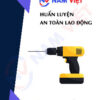
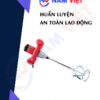





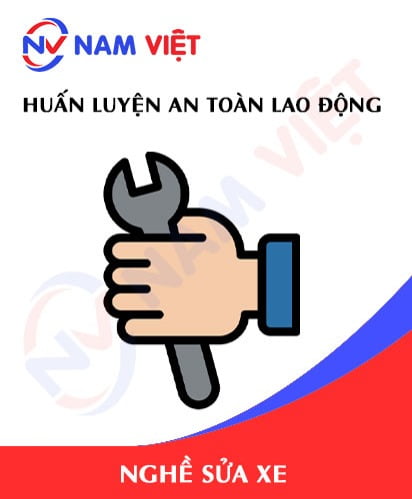

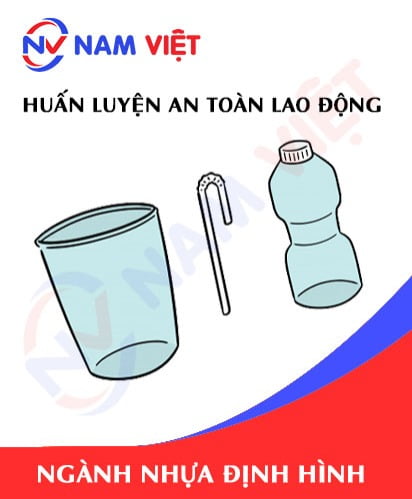
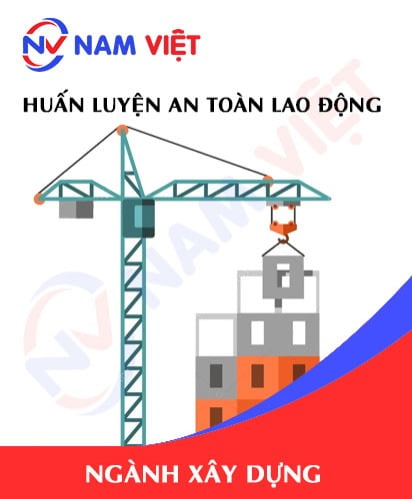


phanminhhang341
Good labor safety unit